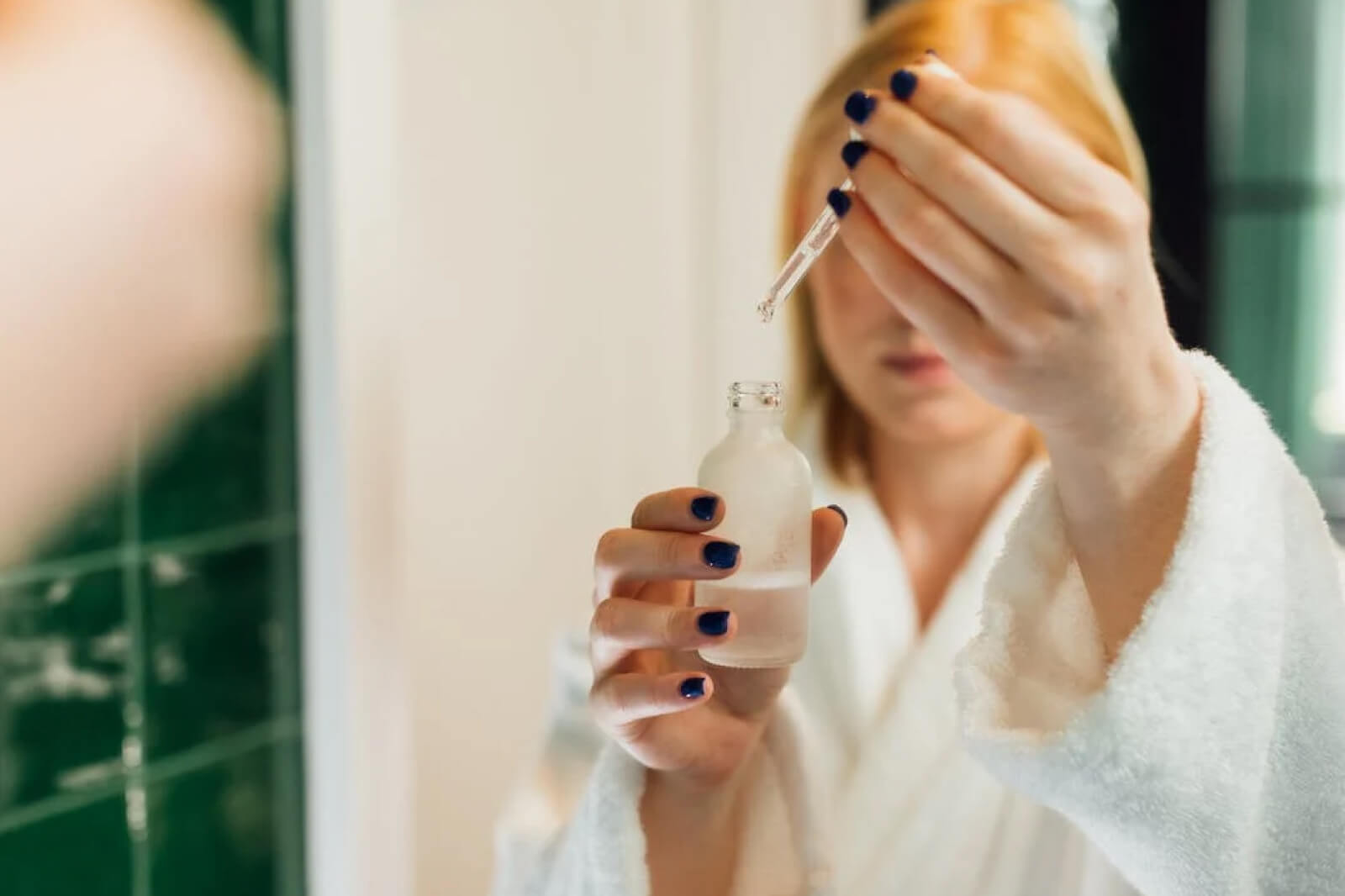During one ordinary morning in November 2019, I reached for my metal-framed, rose gold glasses on my nightstand and let out an exasperated sigh as I thought to myself: “What if I never had to be confined to corrective lenses?”
I got my first pair of glasses when I was in the third grade. By my mid-20s, I had accepted that I would forever live my life as a myope. Most days, I was OK with that; I didn’t entirely mind how I looked in glasses. I’d even spent a portion of my life working part-time as a sales associate at a certain well-known glasses store. But for some reason, on this particular November morning, I decided that I’d had enough.
Naturally, LASIK surgery had piqued my interest. From the few people I’d spoken to about it — my aunt, an especially friendly Uber driver I had in Chicago once—the procedure was simple and its benefits were astounding.
After a Google search and a skim through some Yelp reviews, I’d discovered that a LASIKPlus center in the neighborhood adjacent to mine offered free consultations to determine whether or not you were a candidate for the surgery. I scheduled mine the following weekend.
The main reason I was interested in LASIK was that contact lenses weren’t cutting it for me anymore. I was 11 years old when I got my first pair, but as an adult trying to wear them caused instant discomfort. I was told by a doctor that some people’s eyes can apparently “tap out” of wearing contacts after too long, and I was in that unfortunate demographic.
That left me with glasses alone to aid my fairly severe nearsightedness. While I’m not an athlete by any means, there are certain activities I liked to do that were not conducive to a glasses-wearing lifestyle, like hiking, going to the beach, and jogging. I was also a frequent concert attendee (when large social gatherings were allowed), and I’d had a few too many close calls with breaking my glasses in a mosh pit.
I was worried I wouldn’t be a candidate for LASIK because, as a teen, I’d suffered from lattice degeneration, a thinning of the retina that causes annoying “floaters” and requires a different type of laser treatment to mend. The employees at the LASIK center assured me that my history wouldn’t affect my eligibility for the surgery whatsoever; in fact, my young adult age and moderate prescription (about a -6.00 in both eyes) rendered me a perfect candidate.
Now, it’s important to mention the cost of LASIK eye surgery. It obviously comes with a hefty price tag, which will vary by your facility and insurance coverage. However, especially if you’re a frequent contacts wearer, LASIK can easily end up paying for itself. Mine ended up being around $3,000 for both eyes. After talking it over with my family, I’d concluded that I definitely wanted to go through with LASIK. One of the surgeons had an opening the following Friday afternoon.
The only thing you need to do to prepare for LASIK is avoid wearing your contacts for a few hours beforehand. As this didn’t pertain to me, all I had to do was make sure I arrived at the designated time, having read and signed the waivers I was given. One of the assistants brought me into an exam room to double-check my prescription and eye health, as well as administer some disinfecting eye drops. These stung, but were completely bearable.
Prior to my surgery day, I’d scoured YouTube for as many comprehensive vlogs I could find of others’ LASIK experiences. Most people said they were given a Xanax before their surgery, so I was completely expecting to be moderately knocked out. When a Xanax was, in fact, not offered to me, I had a harrowing realization that I would be getting my eyes operated on while stone-cold sober.
The Surgery
LASIK is such a quick and relatively minimally-invasive procedure that you don’t need to be put under anesthesia. This made me nervous — I’m nauseous just getting a flu shot — but when perfectly clear vision is on the horizon, the slight discomfort is worth it.
All the surgery is, really, is slightly uncomfortable. Once I was called into the operating room, I was given another set of eye drops that numb the surface of your eyes. You don’t have to worry about accidentally blinking throughout the procedure because your lids are held open with strange plastic contraptions. Again: uncomfortable, but not painful.
LASIK, admittedly, sounds incredibly gnarly when described. First, a small flap is cut in your eye that provides access to the cornea—the part of your eye that affects whether or not you’re nearsighted or farsighted. Then, depending on your prescription, a portion of the cornea is removed. This was the scariest part for me during the procedure. Your vision goes completely black for a moment, which is really disorienting.
The laser then seals the flap of your eye shut. If you’ve spoken to anyone who’s had LASIK, they’ll probably tell you that you can smell a burning scent in this moment, and they’re absolutely correct. It didn’t bother me, however, since the surgeon was consistently assuring me that everything was going well.
I think I was in the operating room for only about five minutes. It’s astonishing how short the surgery is, but it’s reassuring to me as a nervous patient to think about how many procedures the surgeon probably goes through a day. Your vision is instantly improved once the surgery is complete, although things will look a little hazy for the first couple of hours, so you definitely shouldn’t drive yourself home. Still, I was able to call myself an Uber and find my driver outside without any struggle.
The Aftermath
Now, if you’re considering LASIK, I’d definitely recommend trying to find a location close to you. About halfway into my ten-minute ride home, the numbing drops had worn off, and my eyes started to burn if I held them open (not particularly ideal while being a female Uber passenger). I kept my eyes closed for the remainder of the ride home, which helped the stinging subside significantly.
Most LASIK surgeons will recommend you take a nap when you get home, and I cosign that suggestion wholeheartedly. I snoozed for about two hours once I got home, and upon waking up, the stinging I experienced in the Uber was gone. Keeping your eyes closed for as long as you can right after the surgery will help with any discomfort significantly.
While I wasn’t really incapacitated after my LASIK surgery, I recommend taking it easy for the rest of the day after your procedure. My roommate brought me some takeout for dinner, and we had a friend over to watch a movie. My eyes were still sensitive to light, so I wore sunglasses indoors, but watching TV wasn’t an issue whatsoever.
The next day, I still had bright red spots in the whites of my eyes. Those are completely normal, just not very pleasant to look at. Still, I was able to go to a happy hour with friends in the afternoon, and I went to a Christmas party that evening. My eyes weren’t uncomfortable whatsoever, and my LASIK experience was a popular topic of conversation.
For me, healing after LASIK was a breeze. I was given two different types of eye drops to use alternately every two hours or so, except for when I was asleep. I was advised not to wear eye makeup for a week, and to avoid rubbing my eyes whatsoever. I picked up a concave sleep mask, not only to block out more light, but to keep myself from reflexively rubbing my eyes the moment I woke up each morning.
LASIK surgeons and patients will warn you of seeing “halos” while you’re healing, too. These are little rings that you perceive around lights, especially at night, so you might have to avoid driving at night for a few weeks because of this. I live in New York City, so halos didn’t affect my driving routine. They were only slightly annoying until I got used to them, and then after a couple of months, they disappeared completely. Halos are entirely normal and shouldn’t concern you while you’re healing from LASIK.
Some people experience pretty severe eye dryness while healing, too. I have pretty watery eyes as it is, so the dryness didn’t hit me so hard, although I made sure to tote along eye drops with me wherever I went. My eyes did get pretty itchy while visiting my family in Colorado for Christmas, so the dryness you experience will also depend on the climate you live in.
I had one follow-up appointment a couple of days after my surgery, where after another quick exam, I was told that my eyes were healing beautifully and my vision was now at 20/15—even better than 20/20. I was absolutely ecstatic.
After spending 15 years with moderate to severe nearsightedness, the idea that I’d never have to put on glasses to see things far away was absolutely thrilling. As corny as it sounds, I felt free and walked out of the LASIK facility with a new sense of confidence.
While I’ll never need to wear glasses for distance ever again, once I’m older, I’ll probably still have to get reading glasses. This is because the need for reading glasses is due to muscles in your eyes losing elasticity with age, not with your corneas; LASIK can’t fix that.
Still, I have at least a couple decades of glasses-free life ahead of me. I’ll never need to worry about my glasses falling off while I run or hike, or breaking them in a mosh pit, ever again.
Besides moving to New York City and adopting a kitten, getting LASIK was one of the best decisions I’ve ever made for myself. Now, a year later, I’m still incredibly grateful for having clear vision the moment I wake up, never having to fumble for my glasses on my nightstand ever again. My only regret is that I didn’t do it sooner.











